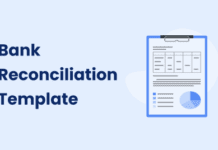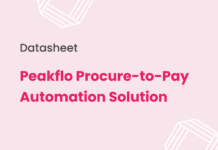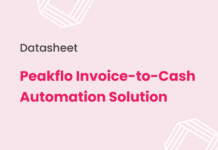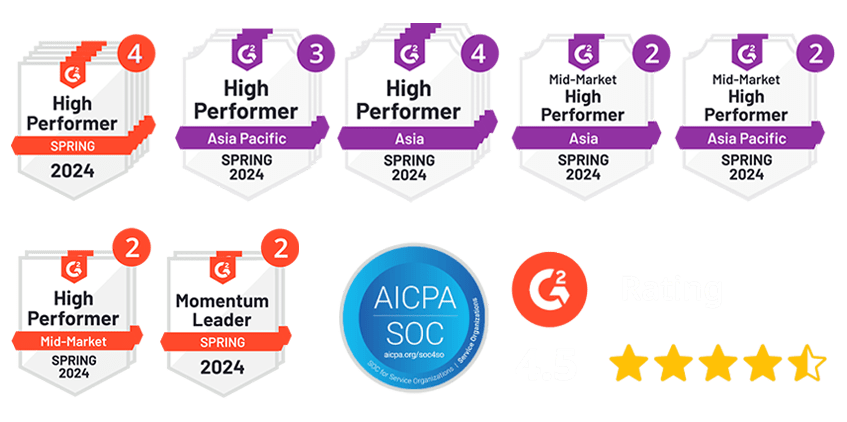Agentic AI represents a significant shift in how we interact with technology. Unlike traditional AI systems that simply respond to our commands, agentic artificial intelligence can independently make decisions, take actions, and solve problems on our behalf. While many of us use AI tools like chatbots and voice assistants daily, we rarely understand how they work or how they’re evolving.
Today, AI is transforming from passive tools that require our constant guidance into proactive agents that can understand our needs and act accordingly. In fact, this evolution toward more autonomous systems affects everyone, not just tech enthusiasts or industry professionals. Understanding the basics of the agentic AI definition helps us prepare for a future where these systems will increasingly handle tasks, make recommendations, and even negotiate on our behalf.
This guide explains what agentic AI is, how it works, where you may already be encountering it, and why it matters in your everyday life. Rather than focusing on technical jargon, we’ll explore practical examples and real-world applications that demonstrate why this technology represents a significant development for all of us.
What is Agentic AI in Simple Terms?
Imagine having a digital assistant that doesn’t just answer your questions but actually takes initiative to solve problems for you. That’s the essence of agentic AI. At its core, agentic AI refers to artificial intelligence systems designed to act autonomously to achieve specific goals with minimal human supervision.
Unlike passive AI tools that simply respond to commands, agentic AI can make decisions, take actions, and adapt to changing environments. These systems don’t just generate outputs—they process information from multiple sources, develop strategies, and execute tasks independently.
Think of agentic AI as the difference between having an assistant who waits for instructions versus one who proactively handles tasks on your behalf. For example, an agentic AI system could plan your overseas trip and make all travel arrangements, or optimize procurement in real-time as demand fluctuates.
How does it differ from traditional AI?
Traditional AI operates within strict boundaries. It analyzes data according to fixed rules and requires constant human guidance. Additionally, traditional AI systems can only access information they were trained on and need manual retraining to adapt to changes.
Agentic AI, on the other hand, brings several key advancements:
- Perceive: Gathers and processes data from various sources like sensors, databases, and digital interfaces
- Reason: Uses large language models to understand tasks, generate solutions, and coordinate specialized models
- Act: Integrates with external tools via APIs to execute tasks based on formulated plans
- Learn: Continuously improves through feedback loops, enhancing its effectiveness over time
Moreover, traditional AI excels at specific, narrowly defined tasks but struggles to generalize from its training data. In contrast, agentic AI actively recognizes, memorizes, and responds to changes in its surroundings. This allows it to handle complex, multi-step problems without constant human intervention.
Essentially, traditional AI follows precise instructions, whereas agentic AI can figure out the steps needed to accomplish a goal. For instance, Siri and Alexa operate on traditional AI models, trained for specific jobs with limited flexibility. Meanwhile, agentic systems can collaborate across specialized tasks to solve problems with minimal supervision.
Agentic AI vs Generative AI
The simplest way to understand the difference is this: generative AI creates, while agentic AI acts.
Generative AI excels at producing content—text, images, code—based on patterns learned from data. It requires user prompts to generate output and typically doesn’t make decisions or take actions independently. Furthermore, generative AI is largely static, producing outputs based on learned data without adapting in real-time.
Agentic AI, however, focuses on goal-oriented autonomy. It can take initiative, break down complex tasks, interact with tools or APIs, and adapt to dynamic environments. Where generative AI waits for instructions like a skilled assistant, agentic AI functions more like a project manager—planning, delegating, and executing tasks without constant oversight.
The distinction becomes clearer when comparing their outputs: generative AI’s output is new content, while agentic AI’s output is a series of actions or decisions. Both technologies can work together—generative AI’s creative capabilities combined with agentic AI’s action-oriented approach create powerful solutions.
As we move forward, agentic AI will increasingly shape how we interact with technology, enabling more autonomous systems that can perceive, reason, act, and learn with decreasing human intervention.
How Agentic AI Works Behind the Scenes?
Behind every agentic AI system is a sophisticated four-step process that enables its autonomous capabilities. This framework—perceive, reason, act, and learn—forms the foundation for how these intelligent systems operate without constant human supervision.
Step 1: Perceive – Gathering data
The journey begins with perception. Agentic AI collects raw data from its environment through various channels. This might include physical inputs from sensors and cameras or digital information from databases, APIs, and user interfaces. During this initial phase, the system extracts meaningful features, recognizes objects, and identifies relevant entities in its environment.
For instance, a vendor onboarding process typically includes verification of credentials, compliance checks, system integration, and training to ensure seamless business operations and minimize supply chain risks. This situational awareness lays the groundwork for everything that follows. Indeed, without accurate perception, the subsequent steps would be compromised.
Step 2: Reason – Making sense of the data
Once data is gathered, the reasoning engine takes center stage. This component serves as the decision-making core of the system, analyzing situations, evaluating options, and selecting actions. Large language models (LLMs) typically function as the orchestrator or reasoning engine, understanding tasks and coordinating specialized models for specific functions.
The reasoning process often employs techniques like retrieval-augmented generation (RAG) to access proprietary data sources and deliver accurate, relevant outputs. Furthermore, advanced reasoning approaches might include:
- Conditional logic using “if-then” statements
- Heuristics for finding efficient solutions
- ReAct (Reason + Act) for step-by-step problem-solving
- Self-reflection to identify and correct reasoning errors
In essence, this step transforms raw data into actionable intelligence through systematic analysis.
Step 3: Act – Taking action on your behalf
The third step is where agentic AI truly differentiates itself from traditional systems. After formulating a plan, the AI executes it by integrating with external tools and software through application programming interfaces (APIs). This could involve sending commands, clicking buttons, triggering APIs, moving a robot, or composing responses.
Consequently, built-in guardrails help regulate these actions, ensuring they align with predefined rules and safety parameters. For example, a customer service AI might be configured to process claims up to a certain amount, whereas claims above that threshold would require human approval. This balance between autonomy and control is critical for responsible deployment.
Step 4: Learn – Getting better over time
The final step—yet one that continuously cycles back—is learning. A true agentic AI system evolves not just during initial training but throughout its operational life. Through feedback loops or “data flywheels,” the system reintegrates interaction data to refine and optimize its models.
This adaptive capability enables the AI to grow more efficient and effective with experience. As opposed to static systems, learning agents continuously update their behavior based on outcomes, enhancing their decision-making abilities for future scenarios. This might involve supervised learning from labeled data, unsupervised pattern detection, or reinforcement learning, where the system receives rewards or penalties based on its actions.
Ultimately, these four steps work in concert to create an autonomous system capable of perceiving its environment, reasoning through complex problems, acting decisively, and improving over time. Although still in early stages of development, this architecture represents a significant advancement in artificial intelligence—one that moves us closer to systems that can truly function as independent agents on our behalf.
Used Cases of Agentic AI
Agentic AI has already moved beyond theory into practical applications that you might encounter in your daily life. From customer interactions to healthcare and logistics, these autonomous systems are changing how businesses operate and serve their customers. Let’s explore some real-world examples where AI is making an impact today.
Customer service that feels human
Call centers have become early adopters of agentic AI, where these systems now orchestrate intelligence across multiple activities simultaneously. By 2028, researchers predict that 68% of all customer service interactions with technology vendors will be handled by agentic AI. Unlike traditional chatbots that follow scripts, these AI agents can analyze customer sentiment, review order history, access company policies, and respond to needs based on all these elements in real-time.
What makes this advancement particularly valuable is how it benefits both customers and service representatives. For businesses, agentic AI can identify customers who might receive unusually high bills, proactively contact them with that information, and suggest personalized ways to lower future bills. Due to this proactive approach, companies using agentic AI report significant improvements in first-contact resolution rates, reducing the need for customers to call back.
Smarter healthcare assistants
In clinical settings, AI agents access large datasets across departments to significantly reduce time spent on administrative tasks such as billing, scheduling, and resource allocation. These virtual health assistants (VHAs) engage users through real-time conversations, tailored advice, and motivational encouragement.
Notably, advanced healthcare AI can also help with diagnostics, manage drug processes, and monitor patient vitals in real-time, flagging potential health risks before they escalate. This proactive monitoring allows for timely interventions that might prevent hospital readmissions. Interestingly, emerging evidence shows people often rate these virtual agents as trustworthy counselors and are more willing to discuss stigmatized topics like drug use, depression, and sexual symptoms with them than with human providers.
AI helping procure-to-pay
Procurement is experiencing a fundamental shift through AI-powered procure-to-pay solutions. Advanced platforms like touchless invoice processing and autonomous sourcing can extract data, match invoices, and analyze spend patterns with minimal human intervention. Unlike traditional procurement systems, these intelligent P2P solutions can interpret business requirements in natural language, automate approval workflows, identify cost-saving opportunities, and flag compliance issues. The key difference with AI-powered procurement systems is their ability to predict future spending needs, automate routine tasks, monitor supplier risk in real-time, and self-correct processing errors. Companies, including major enterprises, are already implementing these tools, with 78% of global enterprises either deploying or actively scaling AI-powered procurement solutions to accelerate procurement cycles and enhance strategic decision-making.
AI in logistics and delivery systems
Logistics companies are deploying agentic AI to autonomously optimize transportation processes by managing vehicle fleets, delivery routes, and large-scale logistics operations. Some delivery companies use autonomous dispatching agents to assign and reroute vehicles based on traffic, weather, or order urgency.
Furthermore, AI-powered route optimization has achieved remarkable efficiency gains. These systems also reduce empty truck miles from the industry average of 30% down to between 10-15%, significantly cutting fuel consumption and carbon emissions.
Through these real-world applications, agentic AI is demonstrating its ability to perceive environments, reason through complex problems, take independent actions, and continuously improve—all qualities that distinguish it from earlier AI systems.
Why Agentic AI Matters?
The value of agentic AI becomes clear when we look at its practical benefits for regular people. Beyond its technical capabilities, this technology is reshaping our daily experiences in meaningful ways.
1. It saves time and reduces effort
The most immediate benefit of agentic AI is its ability to handle tedious, repetitive tasks autonomously. Unlike traditional automation, agentic systems can manage entire workflows from start to finish without human intervention. Consider a customer return—instead of navigating complex phone menus, an AI agent can process your return, offer alternatives, or even provide a discount for the inconvenience.
These systems work around the clock without getting tired or needing breaks, enabling 24/7 availability for assistance at any time. This constant operation means tasks get completed faster, whether it’s answering questions at midnight or processing paperwork while you sleep.
2. It can make services more personalized
Perhaps the most transformative aspect of agentic AI is its capacity for true personalization. These systems analyze your behavior in real-time and adapt instantly to your specific needs.
By continuously processing live customer data—browsing behavior, clicks, and purchasing patterns—agentic AI shapes every interaction specifically for you. This goes far beyond simply adding your name to an email. Instead, the technology anticipates what you might need next, often before you realize it yourself.
For example, in e-commerce, AI agents can proactively analyze your behavior and cart content to surface real-time offers that match your interests.
3. It helps businesses serve you better
When companies implement agentic AI, everyone benefits. These systems have helped businesses achieve 65% deflection rates within six months, meaning fewer frustrations with long wait times.
Some organizations report 70% more customer conversations resolved without human intervention, leading to faster service. Furthermore, implementation has reduced operational workloads by 50% while maintaining 99.9% accuracy in managed requests.
Ultimately, agentic AI represents a genuine win-win: businesses operate more efficiently while customers receive faster, more personalized service precisely when they need it.
What the Future Looks Like with Agentic AI
The landscape of work and technology will undergo profound shifts as agentic AI matures. Experts predict that organizations may soon operate with millions of AI agents under human supervision, fundamentally changing our relationship with digital tools.
1. More autonomy in digital tools
The coming years will witness AI systems that operate with increasing independence. Companies might soon evolve where every employee acts as a manager overseeing multiple AI agents. This expansion is happening rapidly—a survey found that 50% of businesses plan to implement AI agents this year, with this figure expected to rise to 82% within three years.
What distinguishes these future systems is their ability to operate without constant human intervention. Beyond today’s limited applications, tomorrow’s agentic AI will pursue long-term goals independently, creating entire workflows autonomously. Increasingly, these systems will handle complex processes across data silos, adapting in real-time while orchestrating tasks between other digital agents, bots, and humans.
2. Better decision-making support
Future agentic AI will transform how we make decisions through complementary performance—the concept of humans and AI achieving better results together than either could alone. Research shows non-experts using AI assistance can evaluate proposals as effectively as domain experts.
Nevertheless, the ideal future process remains one where humans make final decisions, but AI guides the thinking process. By handling objective assessments and filtering information based on metrics, AI will streamline specific tasks while humans focus on strategic considerations. This collaboration will ensure decisions incorporate both AI-generated insights and human judgment regarding ethics, social norms, and values.
3. New job roles and skills
The job market is already evolving to accommodate agentic AI, with AI-related roles expected to grow by over 30% annually. Emerging careers include:
- AI prompt engineering specialists
- AI-human workflow designers
- Digital teammate trainers
- Agentic AI strategy directors
Simultaneously, distinctly human capabilities will become increasingly valuable. Creative problem-solving, emotional intelligence, ethical judgment, and cultural awareness will distinguish human contributions in an agentic workforce.
How Peakflo’s Agentic Workflow Helps?
Peakflo offers a highly intelligent, self-improving automation platform for finance and operations—covering everything from invoice-to-cash to procure-to-pay—augmented with autonomous voice agents that streamline routine communication. This empowers finance and operations teams to reclaim hours, boost accuracy, and focus on strategic work.
Agentic Workflows
These workflows cover a wide range of use cases: accounts payable (PO-matching, vendor onboarding), AR (invoice submission, cash application), anomaly detection, approvals, and expense management. This is how it works:
- Record & Upload: Users record their current screen workflows with audio explanations, capturing the full AS‑IS process.
- Workflow Creation: Peakflo AI analyzes the recording, decomposes the tasks into steps, and builds an automated workflow.
- Automation: The system executes tasks—like invoice handling, approvals, reconciliations, and document extraction—using LLM-driven logic, API/ERP integrations, and intelligent decision-making.
- Self-Improvement: As Peakflo repeats the workflow, it learns from exceptions and optimizes execution paths, adapting without manual rule updates.
AI Voice Agents
- Phone/SMS/WhatsApp Outreach: Voice AI agents autonomously handle large volumes of routine calls, outreach, follow-ups, invoice collection, order updates, and customer queries—delivering human-like, real-time, multilingual interactions.
- System Integration & Escalation: These agents operate continuously, feed response outcomes directly back into ERP workflows, escalate disputes, send notifications, or schedule human handoff when needed. All conversations are logged and integrated with financial records.
To see agentic workflows and AI voice agents in action, schedule a call with Peakflo experts today.
Conclusion
Agentic AI represents a fundamental shift in how technology serves our needs. Throughout this guide, we’ve seen how these systems differ from traditional AI by functioning autonomously, perceiving environments, reasoning through problems, taking independent actions, and continuously learning. Unlike generative AI, which simply creates content, agentic AI actively pursues goals with minimal human guidance.
These advancements matter because they deliver tangible benefits to everyday people. Tasks that once consumed hours now complete themselves automatically. Services adapt specifically to individual preferences rather than offering one-size-fits-all solutions. Companies using agentic AI report significantly improved customer satisfaction alongside operational efficiency gains – a genuine win-win scenario.
Looking ahead, we can expect AI systems to operate with increasing independence under human supervision. This partnership between human judgment and AI capabilities will likely transform decision-making processes across industries. The job market will undoubtedly evolve, creating new roles focused on AI collaboration while emphasizing distinctly human skills like creativity, emotional intelligence, and ethical reasoning.
Understanding the basics now prepares you to navigate a future where intelligent, autonomous systems increasingly work alongside us, enhancing human capabilities rather than simply replacing them.









![Why AI Sales Calls Are Making Good Sales Reps Even Better [2025 Guide] ai sales calls](https://cdn-kmjmp.nitrocdn.com/YvtqmrsiHUxqerlSiZgbfzqqTARWTElr/assets/images/optimized/rev-834053b/blog.peakflo.co/wp-content/uploads/2025/09/65168cf6-3001-4733-8cbc-12d5684cf449-218x150.webp)

































